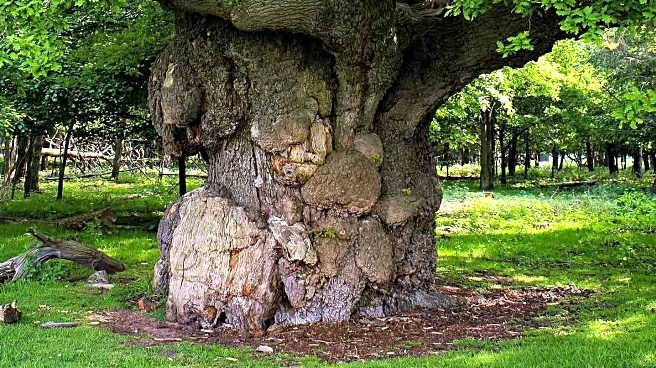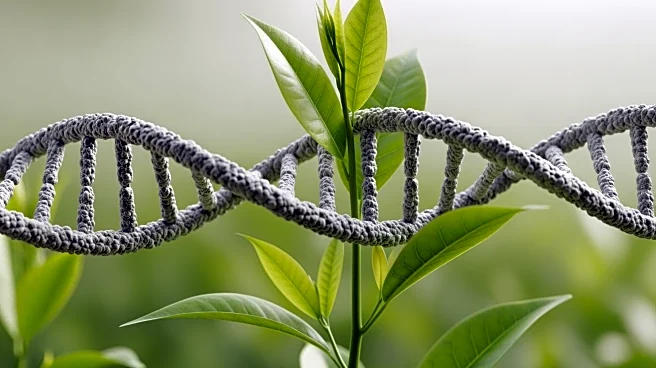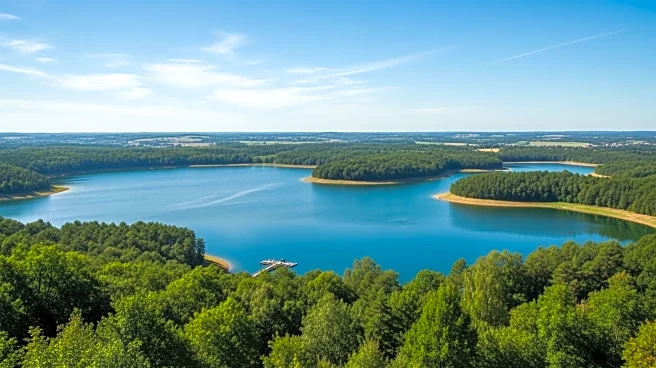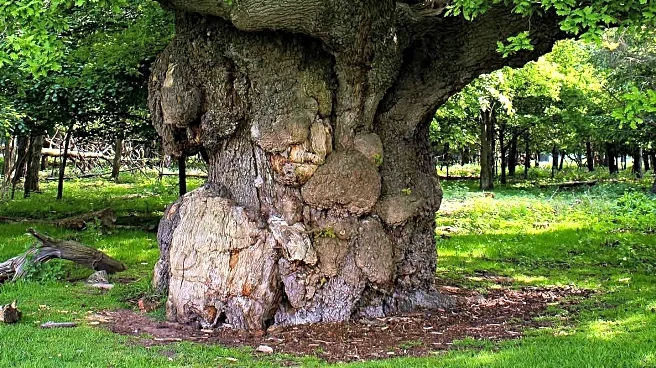What's Happening?
The Arnold Arboretum, managed by Harvard University, is enhancing its tree collection by developing an understory of herbaceous plants. This initiative aims to provide a better visual contrast to the arboretum's majestic trees, which include species brought
from across the Northern Hemisphere over the past 150 years. The arboretum serves as a living testament to plant explorers like Charles Sprague Sargent and Ernest Wilson, who contributed to the collection of evergreen and deciduous conifers, hardwoods, and flowering trees and shrubs. The arboretum's approach allows these trees to grow in forms similar to their natural habitats, emphasizing their historical and scientific significance. The addition of herbaceous plants is part of a broader effort to celebrate the connection between collected plants and humankind, enhancing the arboretum's role as a place of study and inspiration.
Why It's Important?
The development of an herbaceous understory at the Arnold Arboretum is significant for several reasons. It enhances the aesthetic appeal of the arboretum, making it a more engaging and educational environment for visitors. This initiative also underscores the importance of biodiversity and the role of botanical gardens in conservation efforts. By showcasing a diverse range of plant species, the arboretum contributes to the preservation of rare and endangered plants, some of which have been brought back from near extinction. Additionally, the arboretum serves as a valuable resource for researchers and students, providing opportunities for study and observation of plant growth and adaptation. The project reflects a commitment to fostering a deeper understanding of the natural world and its interconnectedness with human culture and history.
What's Next?
The Arnold Arboretum's efforts to enhance its collection with herbaceous plants may lead to increased visitor engagement and educational programs. As the understory develops, the arboretum could host workshops and guided tours to educate the public about plant diversity and conservation. Researchers may also conduct studies on the ecological impact of the understory on tree growth and health. The arboretum's initiative could inspire other botanical gardens to adopt similar practices, promoting biodiversity and conservation on a broader scale. Additionally, the arboretum may collaborate with other institutions to exchange knowledge and resources, furthering its mission of education and preservation.
Beyond the Headlines
The Arnold Arboretum's initiative to develop an herbaceous understory highlights the cultural and ethical dimensions of botanical conservation. It reflects a growing awareness of the need to preserve plant diversity in the face of environmental challenges such as climate change and habitat loss. The arboretum's approach emphasizes the importance of maintaining historical plant collections while adapting to contemporary ecological needs. This project also underscores the role of botanical gardens as spaces for reflection and connection with nature, offering a respite from urban life and fostering a sense of community among visitors. The arboretum's efforts contribute to a broader cultural shift towards valuing and protecting the natural world.













